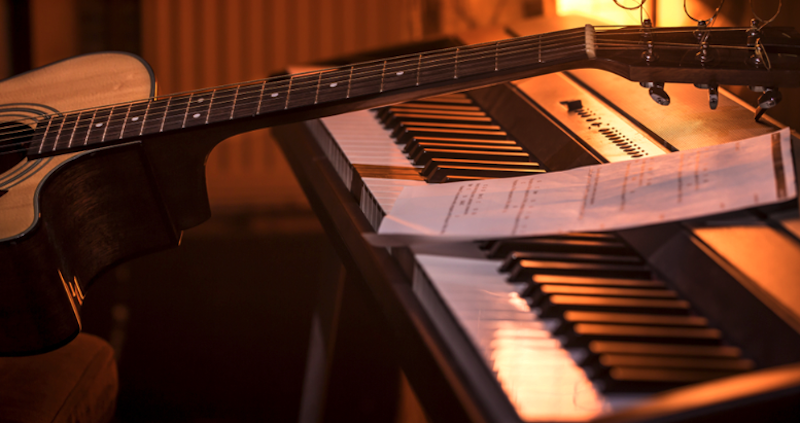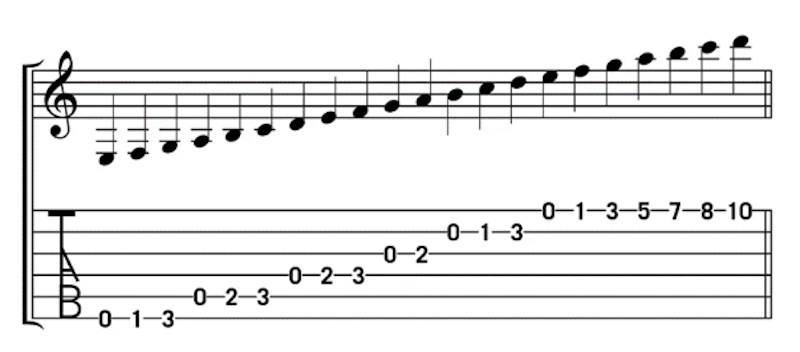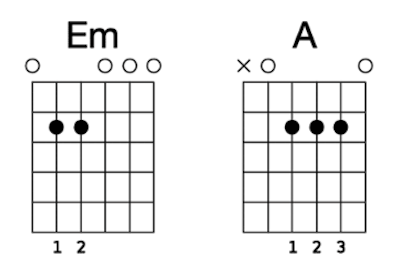
Piano vs Guitar: Which One is Right for You?
Are you interested in learning a new instrument but need help deciding whether to choose the piano or guitar? Our article explores the similarities and differences between them, allowing you to pick the one that best suits your goals and interests.
The piano and the guitar are two of the most widely played instruments in the world, leaving many aspiring artists torn between the two. Both are beautiful instruments that deliver unique sounds. However, each has its own benefits and challenges, so choosing between them comes down to personal preference and musical goals.
But no matter which instrument you choose, you must be ready to dedicate your time and effort to practice to master your skill and ultimately see the fruits of your labor.
It’s also crucial to think about what you hope to get out of playing an instrument and what kind of music you enjoy playing before choosing between the two.
In this article, we’ll explore the key similarities and differences between piano and guitar to help you make an educated decision about which instrument is best for you. So, let’s dive in and discover which instrument is right for you.

The Similarities Between Piano and Guitar
Good Hand Dexterity And Finger Coordination
To play either instrument successfully requires developing great motor skills, including finger dexterity and hand-eye coordination. Both instruments need rapid, flexible, and accurate fingerwork to be able to hit the right notes clearly and precisely to get a beautiful tone without unwanted noise.
Both instruments also require coordination of both hands to get a fine tune out of them. In playing piano, according to James Mann, the vocal coach at BecomeSingers, the left hand is usually responsible for delivering the rhythm, while the right hand is responsible for the melody and harmony. Guitarists use their left hands to fret notes and play chords while their right hands strum or pick the strings.
In order to play complex chord progressions and melodies, the musician must be able to coordinate the use of both hands.
Both Instruments Rely on Strings to Generate Sound
When you push the keys of a piano, hammers hit the instrument’s strings. The sound is generated by the string’s vibration and then amplified by the piano’s soundboard. The length, thickness, and tension of the strings determine the pitch of the sound the piano produces.
The guitar, as you know, is played by plucking or strumming its strings. And similar to the piano, the thickness, tension, and length of the guitar’s strings influence the pitch of the sound generated.
So even though the piano and the guitar are played very differently, strings are essential to the sound of both instruments.
Versatile Instruments
There are several musical styles that can be played on the piano and the guitar. Although the piano is usually associated with classical music (Mozart, Beethoven), you can play jazz, rock, pop, blues, and even R&B on it.
The guitar, which is commonly synonymous with the rock genre, can also be played in many other musical styles, including blues, country, pop, folk, and metal.
It’s fair to say that you can use both instruments in most musical genres.
Expressive Instruments
When played well, the piano and the guitar can evoke strong emotional responses because they allow performers to express themselves in several ways. You can play them in a wide dynamic range, from soft and gentle to loud and intense. You can also use many articulation techniques, such as staccato, legato, vibrato, marcato, and many more, to bring originality and emotion to the song.
In addition, the ability to simultaneously play rhythm, harmony, and melody gives both instruments a wide range of creative possibilities, allowing performers to connect with their audiences and express themselves through music.

The Differences Between Piano and Guitar
Musical Notation
Most piano sheet music features two staves, one for the right hand (the treble clef) and one for the left (the bass clef), allowing chords and melody to be played at the same time.
Guitar music, on the other hand, is often written on a single staff (the treble clef) with chord diagrams or tablature that helps the performer by showing finger placement.
Tab, short for guitar tablature, is a notation system for the guitar that specifies the exact frets to be played on each string. On the tab, the numbers represent the frets, and the lines represent the strings. The guitarist can quickly see which strings to play and where to position their fingers on the fretboard, making tablature a preference for guitarists.
In addition to tablature, chord diagrams are also used to write guitar music which shows where you should place your fingers on the fretboard for certain chords.
Polyphony
In music, polyphony refers to the “simultaneous combination of two or more tones or melodic lines.”
As most classical pianists have ten fingers, the piano has a high degree of polyphony (10 polyphony). This enables us to play a large number of notes simultaneously, enabling intricate harmonies and chords.
The guitar, on the other hand, has a more constrained level of polyphony because of its design. A six-string guitar has a maximum of 6-note polyphony, making it more difficult to produce complex harmonies and chords.
Portability
Compared to guitars, pianos are much more difficult to move. Due to their size, weight, and fragile internal complexity, it is difficult to move them as the instrument’s delicate workings can be easily destroyed during transit or careless handling. Pianos typically weigh several hundred pounds, and grand pianos can weigh more than a thousand. There are very few instances of pianos being carried between venues, as they are often only located in fixed locations like music halls or living rooms.
On the other hand, guitars are light and portable and can fit in a case with no problem. Most guitars weigh between 6 and 12 pounds making them perfect for touring musicians. You can easily carry a guitar to practice sessions, the studio, or even the beach if you feel like having a fun jam session with your friends.
Tuning
Each key on a piano keyboard corresponds to a particular note, and the tuning is set to a standard pitch. This is known as fixed tuning. The internal configuration of a piano’s strings, hammers, and other parts determines its tuning, which can only be altered or adjusted by a qualified technician. A piano will stay in tune after being tuned for around one year. So prepare to call your technician at least once a year if the strings are in good shape.
When it comes to guitars, the musician can easily and quickly alter the tuning of a guitar without the help of anyone, as it’s a simple and flexible process. However, guitars need to be tuned more frequently than pianos because of how quickly the strings may get out of tune as a result of alterations in temperature, humidity, and playing technique, which could damage or break them.

FAQs
What is the best way to learn piano/guitar?
You can either find a qualified piano teacher who can offer direction and constructive criticism, help you develop your skills, and set up a practice schedule so you can learn at your own pace, or find good tutorial videos online that offer helpful information that you can work with.
How long does it take to learn piano/guitar?
It can take anything from a few months to many years, depending on factors like talent, dedication, and practice time. While it may take a few months to a year to pick up the fundamentals and start playing easy tunes, it will take years of dedicated practice to become a proficient musician.
Do I need to learn to read music to play the piano/guitar?
You can play the piano or guitar without being able to read music. But it might be challenging to go beyond the beginner level and develop your skills without some familiarity with musical notation. If you want to learn how to improvise and tackle difficult pieces, it’s crucial to study the basics of music theory.
Popular Choice
The piano and the guitar are both beautiful instruments, yet they are different in many ways. In terms of studying music theory and establishing hand-eye coordination, the piano is unrivaled, but the guitar’s portability and flexibility have made it a popular choice for many musicians.
Choosing between the piano and guitar comes down to your preferences and goals and how much you are willing to be patient, dedicated, and disciplined in order to develop your skills and master the instrument. But the most important thing is to pick an instrument that you truly enjoy playing, and that best fits the musical genres you’re thinking about learning.
At the end of the day, whether you’re looking to make a living in music or play for fun, it’s important to choose the instrument that feels comfortable and perfect for you.


